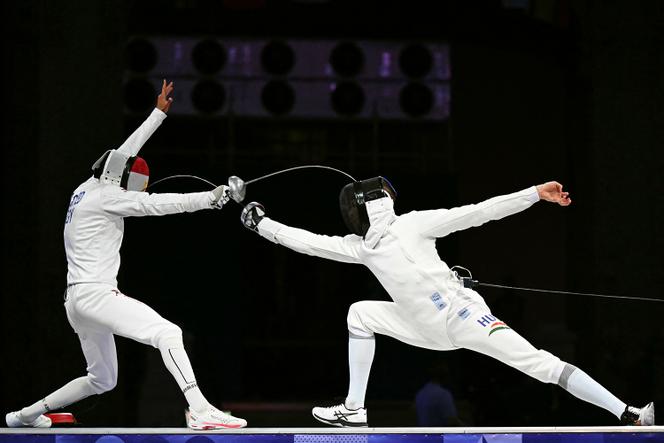


On Sunday, July 28, at the majestic Grand Palais in Paris, Egyptian fencer Mohamed El-Sayed and Hungarian fencer Tibor Andrásfi took to the piste. At stake, the bronze medal. In hand, a sword each, and both the same, as it were. The rules do not leave much room for imagination. In competition, fencing weapons must be fitted with a 90-centimeter blade and a 20-centimeter grip. Their maximum weight is 770 grams. It should also be noted that the épée is a thrusting weapon, its blows may only be delivered with the point.
On the piste, the two fencers advance in masks, which provides for a little swagger. In 1844, the Prieur company in Burgundy invented the fencing mask as we know it today. What distinguishes it? The bib that protects the neck, the inner visor that keeps the head firmly in place and, above all, the mesh that covers the front. For years, manufacturers have been trying to create a transparent fencing mask that would allow fencers' faces to be seen, therefore making the sport more telegenic. But to no avail.
On the rest of the body, both fencers wear the same color. But why all this white? For a long time, fencers wore dark outfits with no color restrictions. Then, when the discipline became a fully-fledged sport at the end of the 19th century, on the occasion of the 1896 Olympic Games in Athens, white was adopted for a very practical reason: It made it easier for referees to note a valid touch (hit). Since then, electrical equipment has been installed, but the white has remained. Because fencing is a sport steeped in tradition.
Note the presence, on the right of the picture, of a bodywire. This is used to signal touches to the referee. In concrete terms, the point of the épée is equipped with an electric button. Two very fine wires are attached to the inside of the blade in a groove connected to a switch on the thumb. When the point of the épée is touched, that is, when the pressure exceeds 750 grams, the switch triggers the conduction of an electric current. The bodywire then relays the information to a signaling device.
While fencers' short pants may not look like much, they do guarantee a certain amount of safety. Often made of Kevlar, they are always fitted with suspenders to keep them high on the waist, to prevent the blade from penetrating between the pants and the protective jacket. Note also that on left-handed models, the fabric flap protecting the pant fly runs from left to right, and vice versa for right-handers. Why? Because there is no such thing as overkill for keeping a sword out of this strategic area.
Translation of an original article published in French on lemonde.fr; the publisher may only be liable for the French version.
